Tutsi Basketry – World Class Weaving
PRIMITIVE - Friday, August 11, 2017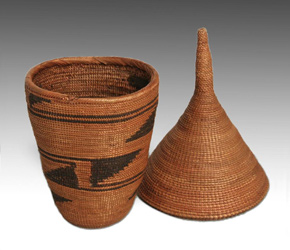 |
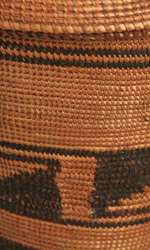 |
|
By Glen Joffe & Misaki Imagawa
Is there a single ancient civilization that did not create and utilize baskets? It doesn’t seem so, which means basketry may be one of the oldest art forms in human history. Unfortunately, the natural fibers historically used to create baskets commonly degrade over time, making it difficult for historical samples to be preserved. Yet, there is proof of basketry from ancient times. For example, archaeologists have discovered ancient pottery fragments containing the imprints of basket weaves, presumably used to mold the pots and shedding light on at least one use for baskets. Although basketry served many functions in the past, today it is seen as something different than a utilitarian necessity in the lives of people. In the western world it is seen more as craft and decoration; however, in certain instances it has been elevated to a recognized art form and a complete collecting category in the world of art.
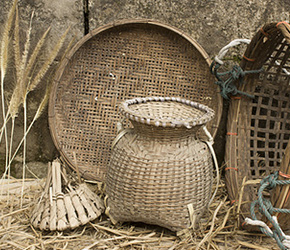 |
|
When it comes to basketry, the Tutsi people of Rwanda, Central Africa are considered some of the finest weavers in the world. As much a social class as a tribal group, the Tutsi have been likened to an aristocracy composed of military leaders, landowners, chiefs and priests. As a cohesive group they held high status and dominated the areas of their residence for many generations. When it comes to traditional African art and collectibles basketry is often overshadowed by wood, bronze and terra cotta artwork; however, Tutsi hand-woven baskets have become a recognized collectible in the greater art world, and the “basket world,” in particular. This may be because Tutsi weavers traditionally performed their craft in service to high status, which is another way of saying “only the best will do.” Tutsi baskets combine practicality with exceptionally fine craftsmanship and exquisite decorative elements.
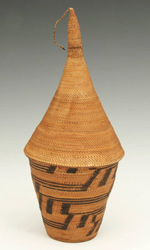 |
||
Among the Tutsi, weaving is a primary form of artistic expression. Traditionally, elite women of the tribe would spend recreational evenings sitting together, diligently weaving baskets that required hours upon hours of careful work to complete. It was a communal time for the women, who worked on baskets, bead work and embroidery while a Tutsi musician played melodies for them in the background. Though most baskets with their unique conical lids were functional and used in daily life, smaller mini baskets were often presented as wedding gifts as a place to store valuables. Yet, baskets were not the only things woven by Tutsi women. Tutsi households were decorated with all sorts of hand woven artworks including floor coverings, panels, tapestries, decorative screens, and even bottle caps and vessel covers. All these articles brought vibrant geometric patterns into their homes.
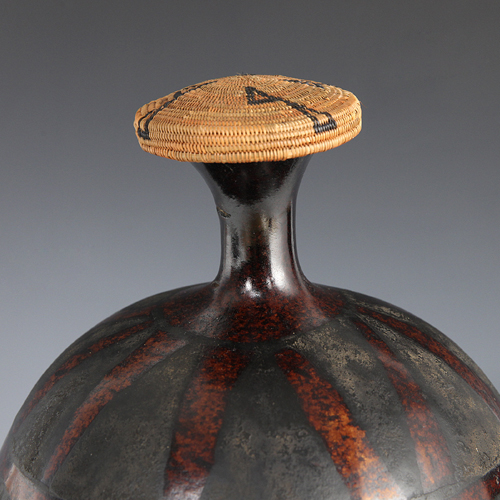 |
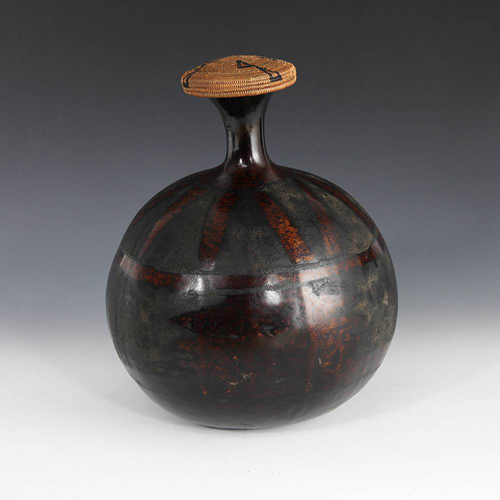 |
|
While women created baskets and tapestries, the men of the tribe were also weavers. They were in charge of building large, woven architectural structures such as granaries and dwellings. Beehives, fishnets and fences were also woven. The Tutsi utilized a variety of plant fibers including grass, bamboo, reed, raffia, banana leaves and papyrus trees to create weaving materials. These fibers were prepared by stripping, soaking, beating and drying them over the course of several weeks. They were then selectively dyed using black color obtained by boiling banana flowers and red from the root and seeds of the Urukamgi plant. Colored fibers were then woven in contrasting patterns against natural fibers. The motifs of these patterns might appear to be random zigzags or triangles, but Tutsi designs have names and represent valuable items such as cowrie shells, the tips of arrows, body parts, and other more abstract concepts.
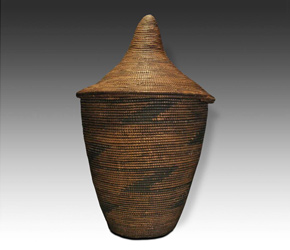 |
|
Despite its long and intricate history, very few Tutsi baskets remain. Years of violence between the Tutsi and the neighboring Hutu tribe during Rwanda’s colonial and post-colonial eras led to the destruction of many villages, homes, and the artwork that once adorned them. During those tumultuous years – which continued as late as the mid 1990s – the art of basketry was essentially lost. Yet, since the end of the conflict it has been revived. Today, basket weaving among the Tutsi honors traditional designs as well as the meticulous quality that made it such a sought after art form, prized by the Tutsi and collectors alike. Each piece mirrors the nimble movements of elite Tutsi women from the past who wove delicate treasures and an amazing artistic history strand by strand.